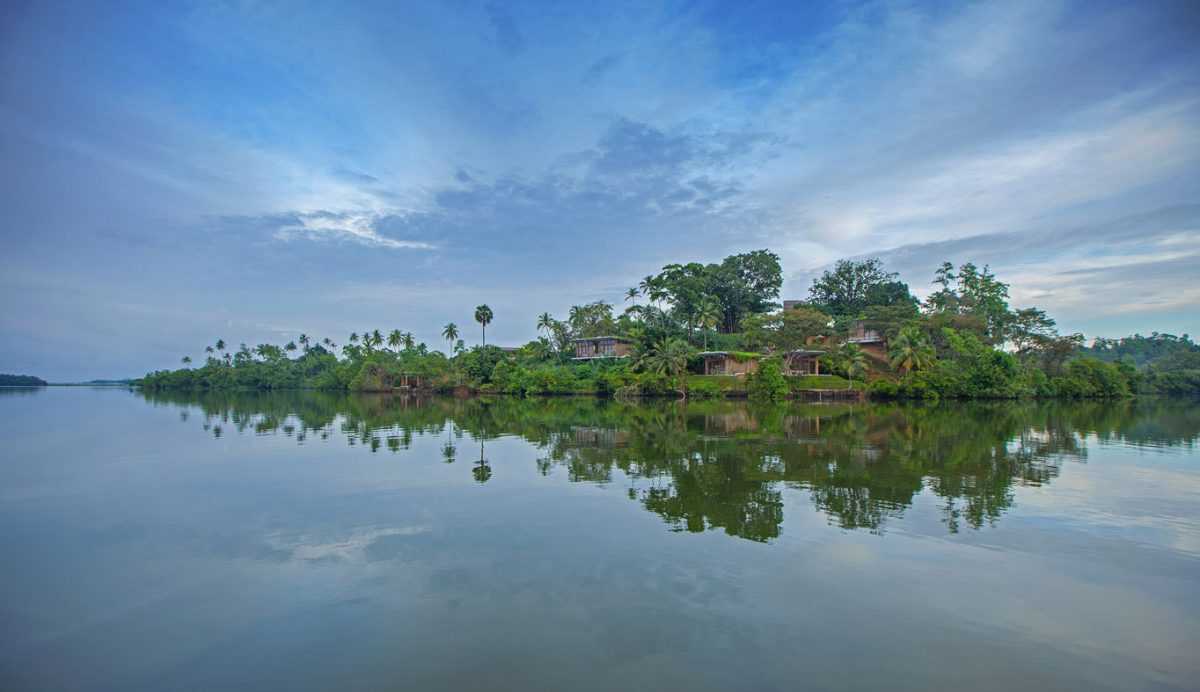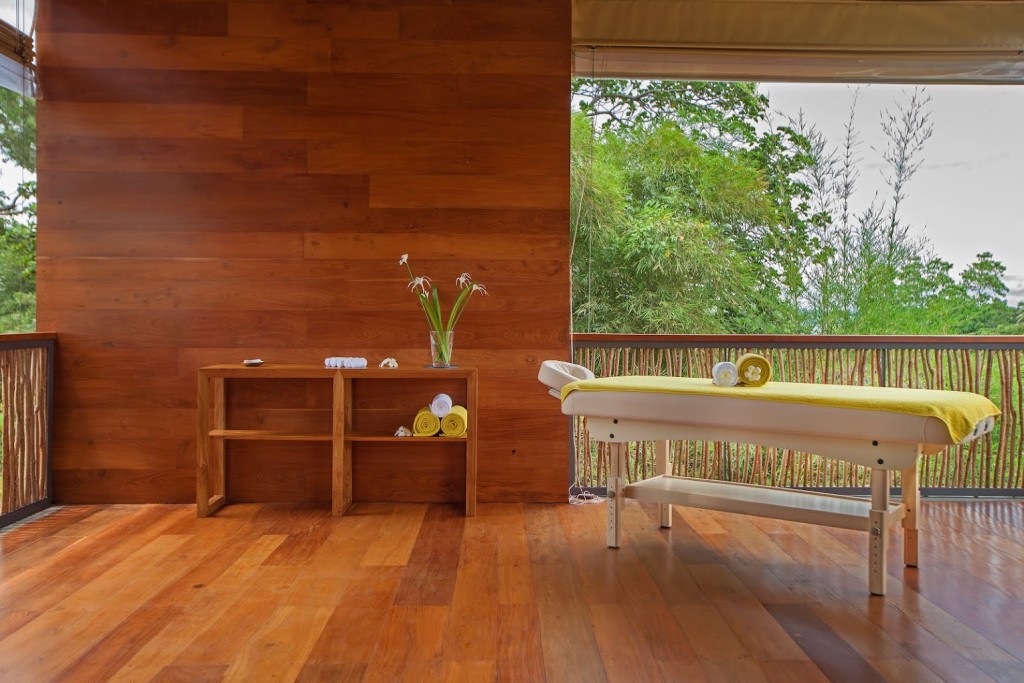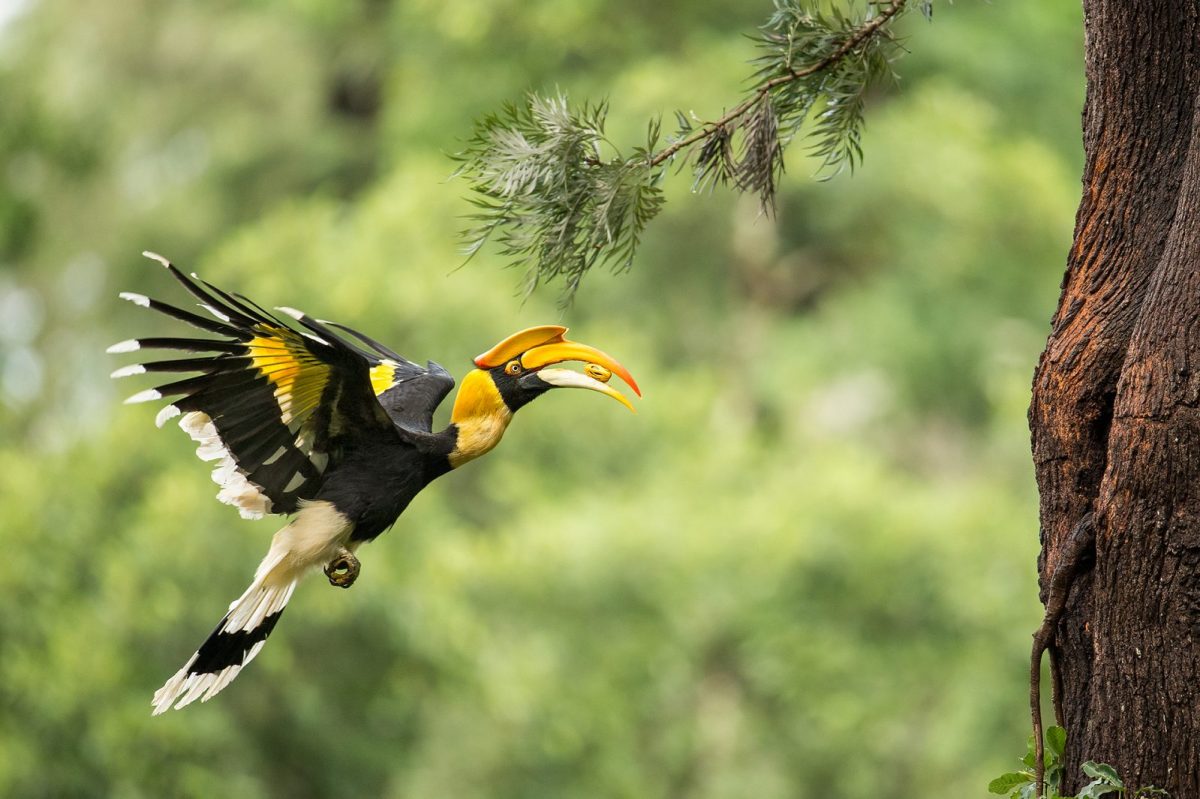Sri Lanka is well known to be a wildlife lover’s paradise – and you don’t have to stray from Tri to appreciate that. Nature is all around us, observes Rob Drummond.
Before we opened, as we were starting to landscape our grounds on Koggala Lake, we invited the Carbon Consulting Company to come and assess the biodiversity of Aladoowa. This was so we could get details about the flora and fauna here and so we could learn how best to enhance the biodiversity of our Sri Lankan eco retreat.
Biodiversity plays an important role in a hotel – from the food served to the materials used in the furniture and fittings – and we recognised that building a new luxury hotel can have a negative impact on our ecosystem, so we were determined to be as ecologically sensitive as possible. Our aim was to enrich the land by planting trees, introduce rare species of mangrove, increase the firefly population and to create a butterfly garden.
In January 2014 the CCC identified 97 species of fauna, five of which were endemic, 89 native and five migratory. This included 51 bird species – including the endangered blue-tailed bee-eater – 18 butterfly species, eight dragonfly species, three amphibian species, six reptile species and three mammal species…
Some of the characters you’ll see at our nature-loving Sri Lankan hotel:
BIRDS
Great hornbill (pictured) These magnificent yellow-beaked big-eyelashed black-and-white birds are best spotted in the morning as they flutter through the treetops. Males can live up to the age of 50. Listen for their loud, high-pitched calls and cackles.
Brown-headed barbet Listen for the loud monotonous call of these birds which live in pairs and feed on berries, fruits and insects. They much prefer village gardens and open greenery to dense forests.
Blue-tailed bee-eater You’ll spy these mostly in winter, when they can be seen plunging into the water to bath. They prey on flying insects such as bees, wasps, dragonflies and butterflies and can be spotted sallying out from the top of trees where they perch as flocks of usually less than ten birds.
Indian pond heron You can’t miss these poking out from paddy fields – they love marshy wetlands and places they can feed on fish, crustaceans and aquatic insects. They are solitary by day, and then roost with their birds of a feather by night.
Red-vented bulbul These cuties live in pairs in gardens and scrublands and are prolific breeders. Look out for their nests made up of little twigs and rootlets bound together by cobwebs.
Asian koel During Sinhala new year season keep your ears open for the mating call of the male bird as this is also the start of their breeding season.
Stork-billed kingfisher The largest of the kingfisher family, you’ll spot these fish-eaters in rivers, marshes, paddy fields, and lagoons.
Jerdon’s nightjar The big eyes are a clue this is a nocturnal bird. During the day, they lie silently on the ground, hidden by their plumage.
Emerald dove These birds love wooded gardens and plantations and are usually found on terra firma in pairs. Their nests are mostly in small trees or in the jungle and are not very high up.
Pompadour green-pigeon Endemic to Sri Lanka, but its fast-and-direct flight with the regular beats and an occasional sharp flick of the wings are characteristic of pigeons in general.
White-breasted sea eagle Whether in Asia or Australia, these birds breed and hunt near water, since fish makes up half of their diet. They’re also opportunistic, and will tuck into carrion if it’s available.
Long-billed sunbird You can’t miss this little blue-headed curve-beaked bird endemic to peninsular India and Sri Lanka. It’s a sociable so-and-so, often found close to human settlements probably due to abundant of flowering plants which it feeds on the nectar of along with tiny insects, spiders and caterpillars. The nest is recognisable as a hanging pear-shaped structure with an entrance in the side.
Asian palm-swift These small birds spend much of their lifetime in the air, living on the insects they catch in their beaks. They drink on the wing, but roost on vertical cliffs or walls. Not unlike many luxury hotel guests, they’re slow risers in the mornings. They breed in southern Spain, Africa and then head northeastwards through southern Pakistan, India and Sri Lanka.
Black-rumped flameback Look out for these bright-red birds in forests and home gardens of lowlands and hills. They like to spend time as a twosome pairs and they graze on ants and insects inside tree barks. Their hopping movements around branches are quite unique.
ANIMALS AND AMPHIBIANS
Southern purple-faced langur This endangered long-tailed arboreal monkey endemic to Sri Lanka inhabits thick jungles and wooded gardens. Their tails are carried hanging down, not over their backs as how the grey langur struts its stuff. When it comes to mealtimes, leaves, flowers, seeds and fruits are on the menu.
Palm squirrel There are four subspecies of this critter that’s found all over Sri Lanka except in heavy jungles. Nuts, seeds, fruits, flowers, bark are their natural diet but they’ll happily seek out rice or bread us humans accidentally drop scraps of.
Common shrub frog Endemic to Sri Lanka, this little amphibian hangs out in tropical moist lowland forests, arable land, pastureland and gardens.
Garden lizard The harmless agamid lizard is arboreal and diurnal, and while usually seen on low shrubs and tree trunks waiting for its lunch of insects it’s often drawn to human habitations.
Green forest lizard Handsome and highly arboreal, found in both forest and anthropogenic habitats such as gardens and plantations, it has a very long tail and is considered the largest Calotes species in Sri Lanka. Various colours have been recorded for this species.
BUTTERFLIES AND BUGS
Variegated flutterer Easily mistaken for butterflies these fragile south-east Asian dragonflies don’t have a very strong flying skills. Give them some encouragement if you see them.
Blue pursuer You’ll spy these common dragonflies from the Mediterranean through southern and eastern Asia to Australia. Small weedy ponds and marshes are their favoured stomping ground. When it comes to flying, they’re fast and strong and they often prey on other dragonflies. (Watch your backs, variegated flutterers.)
Common jezebel A medium-sized butterfly it is found everywhere in southern Asia – in cities, villages, gardens, forests – just about anywhere which has trees to support the semi-parasitic mistletoe. The Jezebel often flies high up in the canopy and usually comes lower down only to feed on nectar in flowers.
Indian cupid A tiny little flutterby found in Australasia and Indomalaya you’ll even spot them in the highest elevations in the wet zone –throughout the year.
Chocolate soldier Commonly spotted in areas with thick vegetation or on either side of gravel roadsides and waste places. It clearly has a little wanderlust as it’s been known to join migratory flights.
Common sailer An all-weather year-round flier, especially where it’s dense with vegetation and lightly wooded. It has been known to follow migration paths towards south India.
Crimson rose They fly close to the ground and their flight is fast and straight. The male butterfly has a black-coloured upper side and his underside is a dull brownish black and his head and stomach are bright pink. The female is similar, but the sequence of are duller, with pale pink, and the top of their abdomen is black.
Tailed jay This mainly green-and-black tropical butterfly is more abundant in wet zones. It flies really fast and only pauses for a moment at each flower. If disturbed it zooms off vertically to considerable height before flying away.




